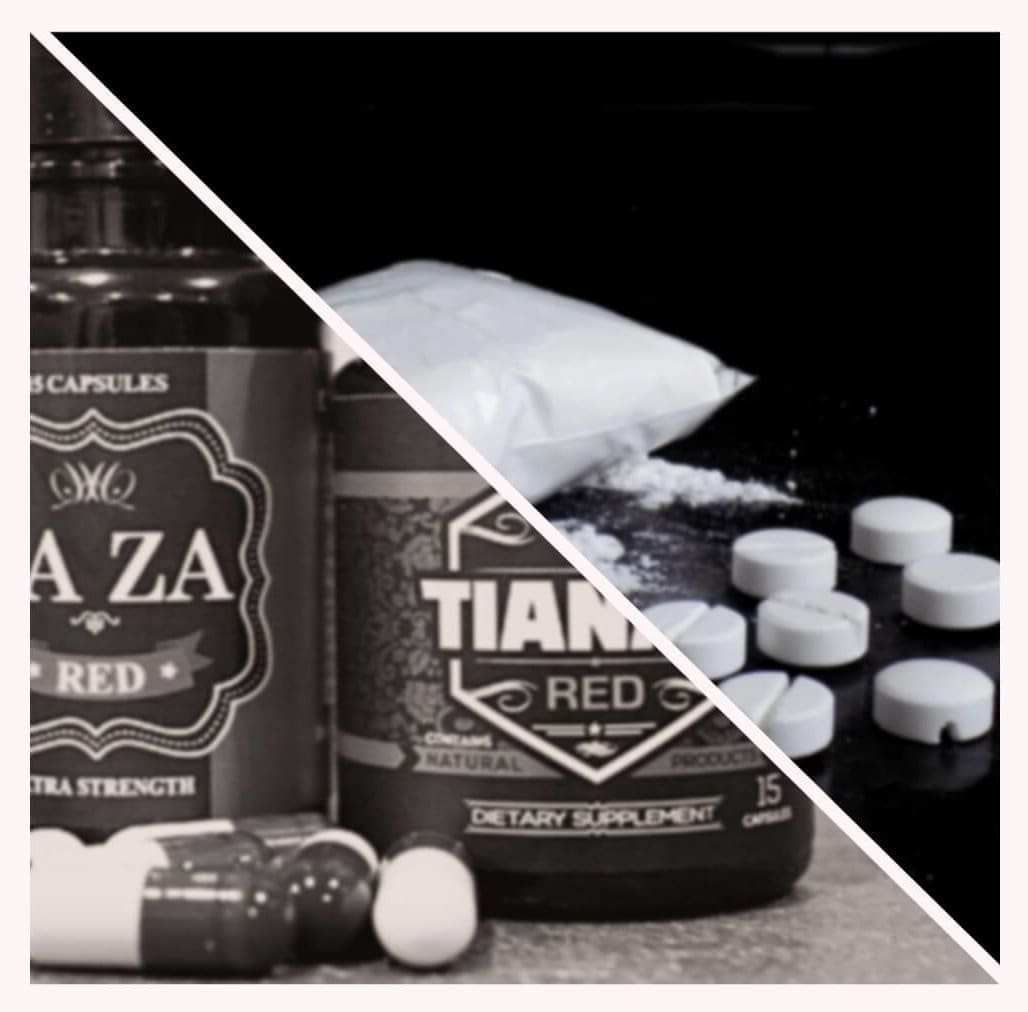How to Identify and Find Tianeptine:
Tianeptine Characteristics and Signs of Abuse
- January, 2023
- Prosperity Haven Staff
- Drug Treatment

Tianeptine might not have the same reputation as other street drugs, but there is increasing evidence that this substance is not only dangerous but has a high potential for abuse. This substance is currently legal and regulated in several parts of the world, such as Europe, where it has been used in recent years as an alternative antidepressant and anxiolytic. Despite this, there is still much research to be done on the drug at this time, to properly understand the mechanisms by which it operates and its benefits and dangers profile. For this reason, tianeptine is not approved by the FDA and is considered an unregistered pharmaceutical drug, essentially illegal to be manufactured or sold in the United States.
The Drug Enforcement Administration has published a memo on tianeptine, noting that it is unapproved and can cause many adverse health effects (DEA). Since it is a relatively new substance, there is a general lack of information on how to identify tianeptine and tianeptine based products as well as signs that someone may be using it.
This guide presents an overview of some of its main characteristics and indicates possible symptoms of use, misuse and abuse.
In this Article
Features & types of Tianeptine, and where Tianeptine (Zaza, Tianna, Gas station heroin) can be found
Tianeptine in the US can come in many different forms. According to the DEA, one of the most common types of the drug use recently is in its powdered form, which is then used to make other products. For example, tianeptine is commonly pressed into counterfeit hydrocodone and oxycodone pills (DEA). Often, it is sold illegally online using brand names such as Coaxil or Stablon. In addition to counterfeit pills, some illicit dealers place the powder in individual baggies similar to those normally used to distribute heroin (DEA). This resemblance to opiates underscores the fact that, on the street, tianeptine is being used as a substitute for other drugs that are more tightly controlled by law enforcement. In this sense, tianeptine can be impossible to distinguish simply by looking at it.
The fact that it is, in its basic form, a simple, white powder, and in some modified forms, a little tianeptine pill or zaza pill means that it can resemble any number of substances. Furthermore, when it is pressed into its pill form, it could be disguised as any legal or illegal drug. Still, when tianeptine is being used and traded illicitly in street markets and by dealers tianeptine often has the appearance of a powdered drug or home-made pill, and comes across as an illicit substance. There are two main forms of tianeptine powder: sodium tianeptine and sulfate tianeptine. Many users prefer the sulfate tianeptine due to its supposed longer and balanced effects.
At the same time, tianeptine is appearing in other products, which is a significant cause for concern. For example, tianeptine products have increasingly appeared online and in some health shops and retail stores, especially gas stations and convenience stores. There, tianeptine is sold as a “dietary supplement” as a pill or powder with names such as “Tianna,” “Tianna Green,” and “Tianna White” (US News & World Report). Among the most frequent slang or street names for Tianeptine are ZaZa, Tianna Red, gas-station dope, and gas-station heroin.
Even though it is illegal to market this non-FDA-approved substance as a supplement, there have been hundreds of documented cases of tianeptine being sold in various, misleading formats. Like multiple other, similar “legal drug” formats found in similar outlets, unregulated tianeptine is a significant cause for concern. Some tianeptine users also obtain it in bulk from online vendors that sell it with an apparent wink and a nod as “for research purposes only.” (Consumer Reports)
To learn more about what certain U.S. states are doing to combat Tianeptine in their state, read our article “All About Tianeptine”. You can also view our article explaining Ohio’s efforts and reasoning –similar to other state’s, for banning tianeptine here.
Is Tianeptine, Zaza, Tianaa Bad? Signs, effects and Symptoms of Tianeptine Use and Abuse
As a lesser-known drug, most people are not necessarily familiar with the signs that someone is using tianeptine. Importantly also, tianeptine does not show up in regular drug screenings or drug tests. When observing the behavior of users, one who is familiar with tianeptine powers may be able to discern the drug’s effects. In standard medical doses, the drug can produce mild euphoria, stress-relieving effects, anxiety-relieving and anti-depressant effects. In lower doses, the drug is absorbed and produces effects quickly, providing users with cognitive and mental performance benefits.
However, when taken in dosages of over 100mg, the effects can be more similar to heroin or opiates. For perspective, prescription doses are normally between 25-50mg per day, but recreational doses can be much higher, anywhere from 100 to 3000mg per day. While fatal dosages depend on a user’s characteristics, overdoses have been reported in cases where users and more than 2.0 mg/L in their blood, and the risk of death is multiplied when mixed with certain other drugs.
Signs that someone is abusing tianeptine can vary, though many are similar to those of most other illicit drugs. One obvious sign is when an individual exhibits signs of strong dependence on the substance. A person who is dependent on tianeptine for even for alleged mental or physical health reasons, might actually have developed a chemical dependency, making them unable to go for a prolonged period of time without using the substance and might need to continue its use to feel normal (DEA). Additionally, a person who is addicted to tianeptine may be using it to achieve effects similar to opioids. While not commonly used intravenously, the few documented cases of this method show that it is extremely brutal, dangerous and life-threatening.
Similarly, one of the most notable signs of tianeptine abuse and addiction is the emergence of withdrawal effects. Like many dangerous and highly addictive drugs, tianeptine can produce physical and emotional withdrawal symptoms when an individual stops using it. These symptoms can be extremely severe and, in some cases, even life-threatening. They include respiratory difficulties, gastrointestinal problems, agitation, confusion, rapid heartbeat, nausea, and more (DEA).
For more information on the effects of tianeptine and how it is used for health and recreation see our article “All About Tianeptine”.
unique side effects of Zaza, Gas station Heroin, Tianeptine use and Tianeptine Addiction
Some law enforcement officials have described tianeptine as being “worse than heroin”, and one former user described it saying: “Withdrawal and detox was 10 times more severe than any opiate withdrawal” (Consumer Reports). In addition to withdrawal symptoms, serious interactions with other drugs can occur. Signs of interaction with other substances include sweating, drowsiness, vomiting, breathing difficulties, and even coma (US News & World Report). Tianeptine use is perhaps uniquely identified by its tendency to induce nausea, constipation, pain in the abdominal region, liver trouble, as well as -on the mental side-excitability, and even psychosis. Though these are not all exclusive to tianeptine, and many of these are also found with certain other substance misuse. For more on other risks associated with tianeptine misuse, read our article on “Dangers & Side effects of Tianeptine”.
Notably, it is also, as mentioned, not detected in standard drug tests, and as such if someone passes a drug screen but still seems often as glassy-eyed and slurring words etc. he may very well be using tianeptine.
Getting Help with Tianeptine misuse and Tyaneptine withdrawal
If you or someone you know may be struggling with unwanted Tianeptine misuse , they may be stuck in a cycle of addiction, which can be almost impossible to break out of alone. (For more help understanding tianeptine’s different types and symptoms of misuse, see our article on “Identifying Tianeptine Types & Use”.) Addiction usually causes one to obsess over the substance they have developed a dependency on, and to seek it out and use it at all costs, even when it may be detrimental to them or their relationships. Additionally, most addictions stem from an underlying emotional or mental cause which may need to be addressed professionally and carefully in a thorough and deep manner.
If someone you care about is exhibiting signs of social or emotional deterioration, as well as other behaviors that may hint at a substance misuse or addiction, you might want to help them research the best available options for caring for and recovering from addiction. Someone stuck in a cycle of addiction may need longer term inpatient care, or a lower level of care, depending on their situation and circumstances. This evaluation is best done by a trained and certified addiction treatment specialist or a doctor. All quality addiction rehabilitation facilities provide access to proper evaluation of treatment needs, along with full applicable health screenings.
Along with finding the suitable care options, you may want to turn to an addiction care provider to assist you in finding a way to encourage and convince the one struggling with addiction to go ahead and commit themselves to treatment. This intervention is usually successful only when approached with sincere respect and compassion.






